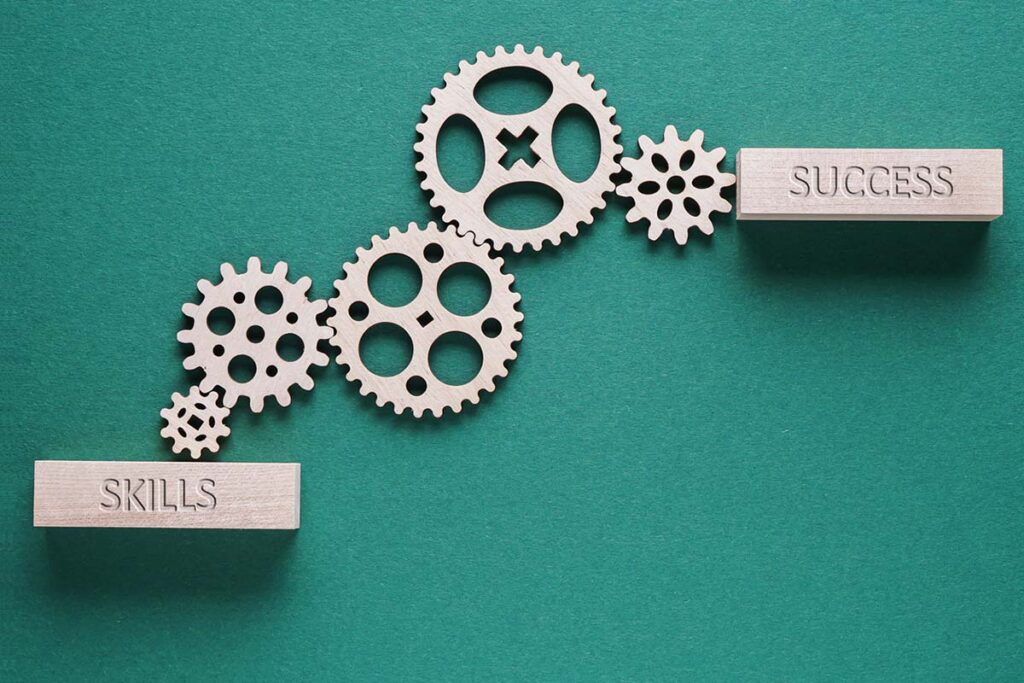Are you overwhelmed with training data and need help sifting through it? Luckily in any learning strategy, a little bit of data goes a long way. KPIs make it possible to record and measure the effectiveness of training by using specific, focused metrics. But what kind of data should we choose to measure, and where do we even begin?
This post will help you understand what exactly a KPI is, highlight why they are important for your learning strategy, and introduce you to the first two out of four essential KPI categories.
What A KPI Is And How Does It Work?
What’s A KPI? Austrian management consultant Peter Drucker, also known as “the founder of modern management”, famously stated that “what gets measured gets done.” KPIs use metrics to do just that and are a key component of learning analytics.
KPI stands for Key Performance Indicators, which indicate the progress toward a greater objective. KPIs are useful because they:
- Provide a focal point for strategic improvement
- Encourage data analysis
- Help organizations find out what exactly they want from training and why
Leading vs. Lagging Indicators: Think of leading indicators as the horse before the cart; they predict what future performances will look like. Lagging indicators, on the other hand, tell us how successful an organization was at achieving past goals.
- Leading indicators predict learning changes, patterns, or trends while lagging indicators change after training has been put in place.
Keep in mind that because leading indicators are predictive, they can be more difficult to measure. Measuring progress with KPIs often means that learners need to focus on their leading indicators to achieve lagging benefits. But what leading indicators and KPIs should you focus on most? Read on to discover the two most important KPIs for beginner’s according to the tried and true Kirkpatrick model.
Getting Started With KPIs for Your Learning Strategy
Level 1: Reaction KPIs
In the beginning, you’ll want your training KPIs to measure learner engagement and highlight how they interact with the training. Reaction KPIs should give you a lot of information about what content works best for certain learners, for example, the effects of gamified content versus text-based content. Some specific training KPIs to track at this level are:
- Attendance: This is especially useful if your training is self-paced.
- Mobile app vs desktop use: Successful learning organizations know that mobile apps are crucial to employee engagement. Use this metric to find out how many employees are completing training from their phone versus their computer, and change content accordingly.
- Learner feedback: An effective way to retrieve this data is to include short surveys in the training. This allows learners to evaluate course content and progress in real-time.
Data Management That Matters
Level 2: Learning KPIs
While engagement is important, the real question is how much information your learners retained. Learning KPIs will help you predict how much knowledge learners acquired, and give you an idea of how they will apply it to their current and future positions. A few important KPIs for this level include:
- Average completion time: This metric will show you how much time it takes for learners to complete a course, and can help you calculate how much training costs concerning each learner’s hours and salaries.
- Average test scores: Try comparing scores against the original targets you set for learners in the beginning and identify any knowledge gaps in the team. You should also take note of who passed and who failed.
- Information retention: To assess how much information stuck with learners long-term, make sure to include follow-up assessments as a part of your training. This can also include short reports from essential stakeholders and supervisors commenting on the change they noticed in employee performance after the training.
The First Two Steps In Learning Analytics: What’s To Come?
Now that you know what KPIs are and which two you should start with, you’re ready to discover the final two crucial KPIs for creating a successful learning analytics strategy. Tune in soon for our next post on KPI levels 3 and 4!
What learning strategies have worked best for your company? Which elements of KPI Levels 1 and 2 would you want to emphasize most while recording data? Share your thoughts and feelings with us here at WeLearn, because together, we learn.

